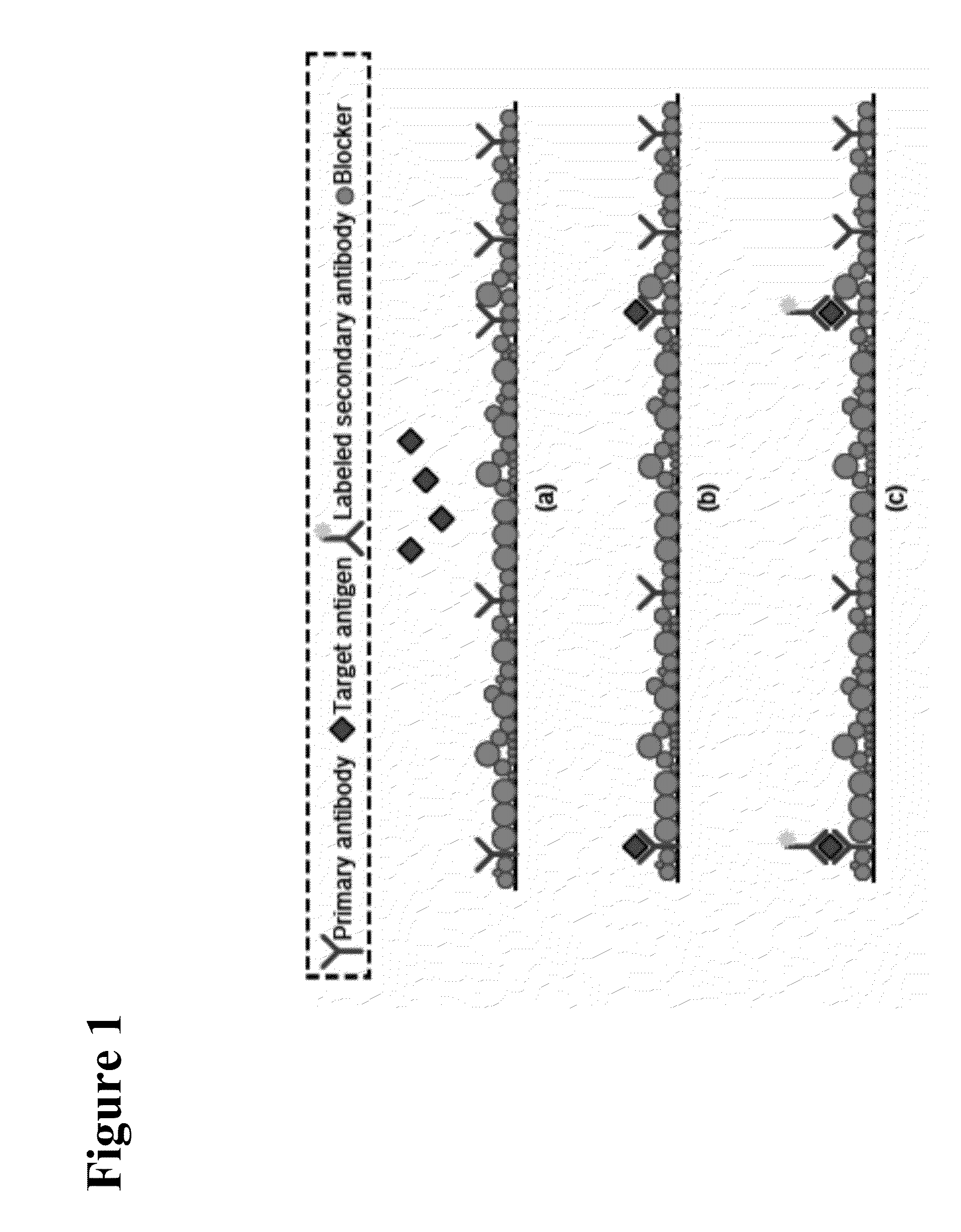METHODS FOR GENERATING pH/IONIC CONCENTRATION GRADIENT NEAR ELECTRODE SURFACES FOR MODULATING BIOMOLECULAR INTERACTIONS, AND BUBBLE DETECTION USING ELECTRODES
a biomolecular interaction and concentration gradient technology, applied in the field of biosensor devices, can solve the problems of sensitivity and specificity not without difficulties, detection assay limitations, detection error rate, minimum detectable concentration, etc., and achieve the effect of reducing user burden, quick determination of bubble locations, and efficient use of electrodes
- Summary
- Abstract
- Description
- Claims
- Application Information
AI Technical Summary
Benefits of technology
Problems solved by technology
Method used
Image
Examples
example 1
Electrochemical Generation of H+ or OH− Ions at Electrode Surfaces
[0274]Electrode material used: The electrode material was indium tin oxide. This is a semiconducting electrode surface with very large potential window in an aqueous solution.
[0275]Electro-Oxidation of Species to Produce H+ Ions.
[0276]Oxidation of ascorbic acid at the electrode surfaces produced H+ ions and changed the electrode surface pH to a more acidic state:
AH2→A+2H++2e−,
where AH2 is ascorbic acid (C6H6O6) (as shown in FIG. 5). The electrode potential at which it oxidizes was less than 0.5V for Indium tin oxide material vs Ag / AgCl reference electrode (as shown in FIG. 7). This potential was less than the voltages needed for the oxygen evolution reaction in aqueous solution. Higher electrode potential (e.g >1V for ITO electrodes in just phosphate buffer) can damage the PEG layer (as shown in FIG. 8). The ascorbic acid also acted as a sacrificial species to prevent electrochemical degradation of the surface chemist...
example 2
pH Change Using Enzymatic Reactions
[0280]Enzymes such as oxidases, ureases or dehydrogenases have been known to consume or generate hydrogen during the reaction. For example:
β-d-glucose+O2→d-glucose-δ-lactone+H2O2
d-glucose-δ-lactone+H2O→d-gluconate+H+
Oxidation of glucose in the presence of glucose oxidase can produce H+ ions that are used to change the pH near the proteins of interest.
example 3
Co-Immobilization of Enzymes Along with Biomolecular Probes in a Biomolecular Interface Layer
[0281]The enzymes when co-immobilized on the surface along with proteins brings them in close proximity so the H+ produced by the enzymatic reaction will lead to a localized pH change that can affect protein binding (for example antigen-antibody binding and non-specific binding).
PUM
| Property | Measurement | Unit |
|---|---|---|
| pH | aaaaa | aaaaa |
| thickness | aaaaa | aaaaa |
| thickness | aaaaa | aaaaa |
Abstract
Description
Claims
Application Information
 Login to View More
Login to View More - R&D
- Intellectual Property
- Life Sciences
- Materials
- Tech Scout
- Unparalleled Data Quality
- Higher Quality Content
- 60% Fewer Hallucinations
Browse by: Latest US Patents, China's latest patents, Technical Efficacy Thesaurus, Application Domain, Technology Topic, Popular Technical Reports.
© 2025 PatSnap. All rights reserved.Legal|Privacy policy|Modern Slavery Act Transparency Statement|Sitemap|About US| Contact US: help@patsnap.com



